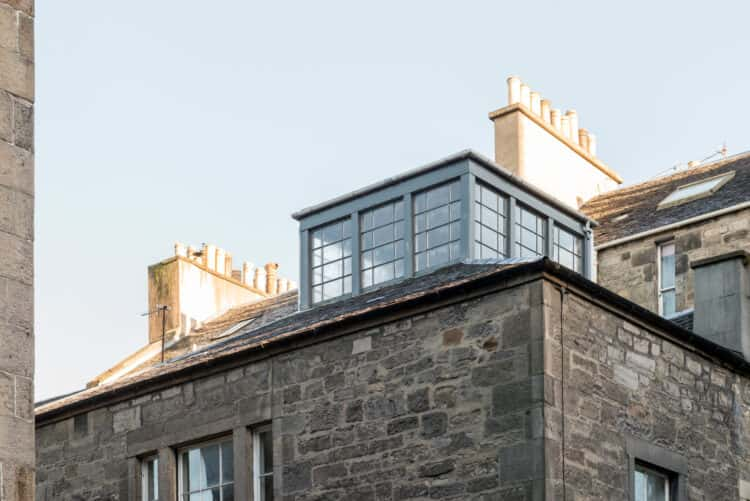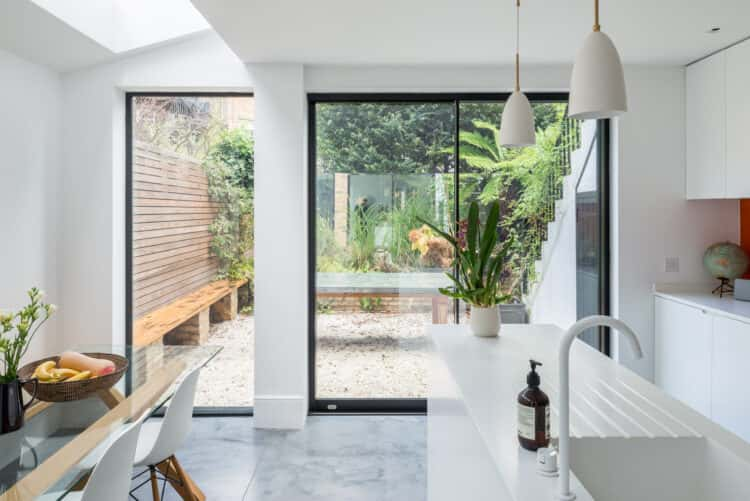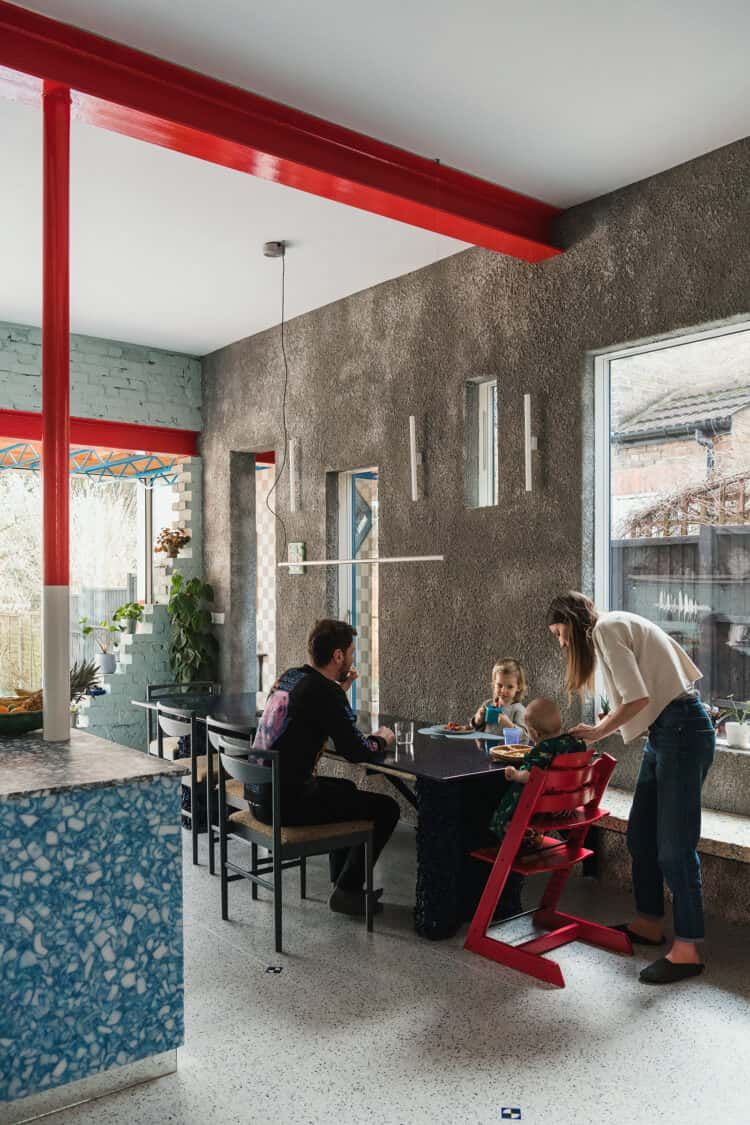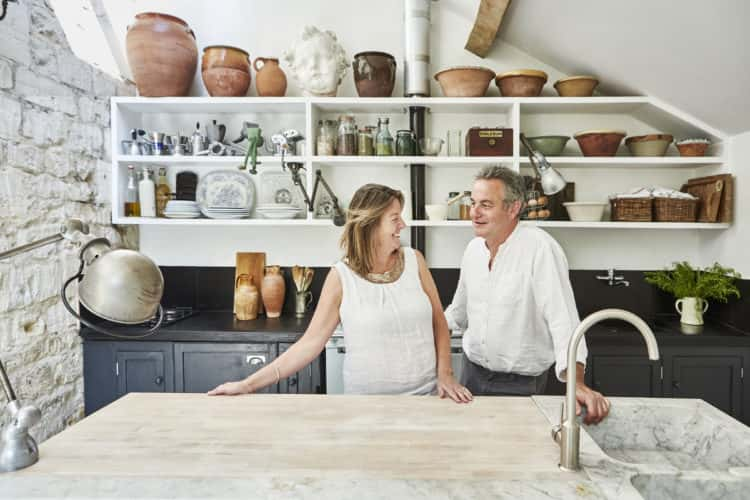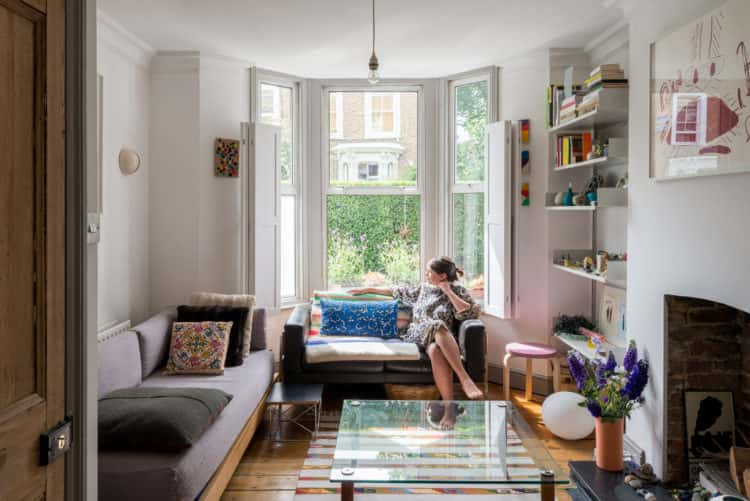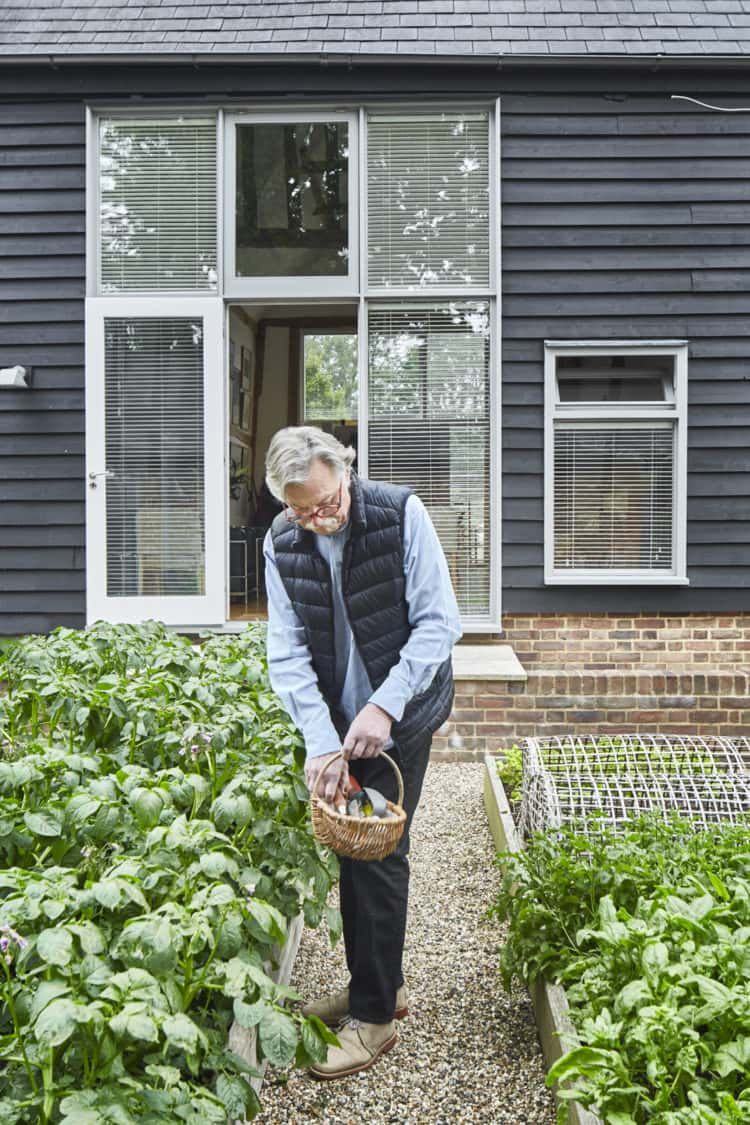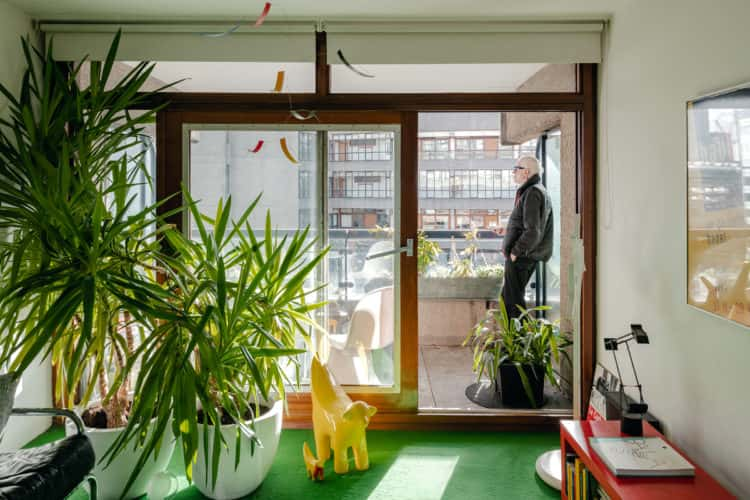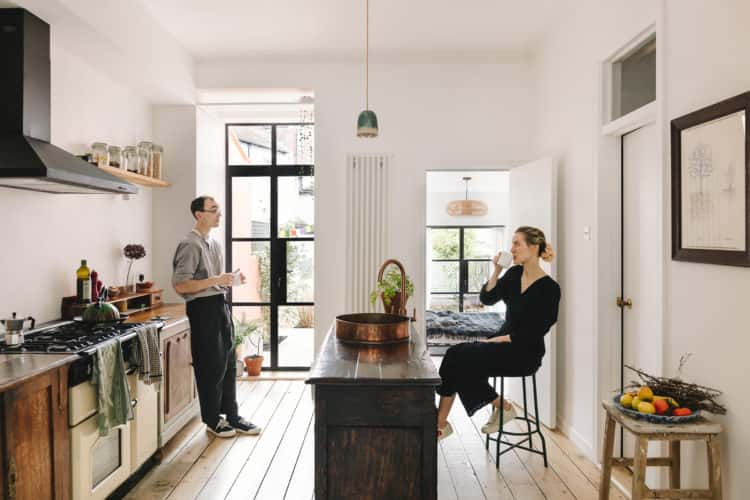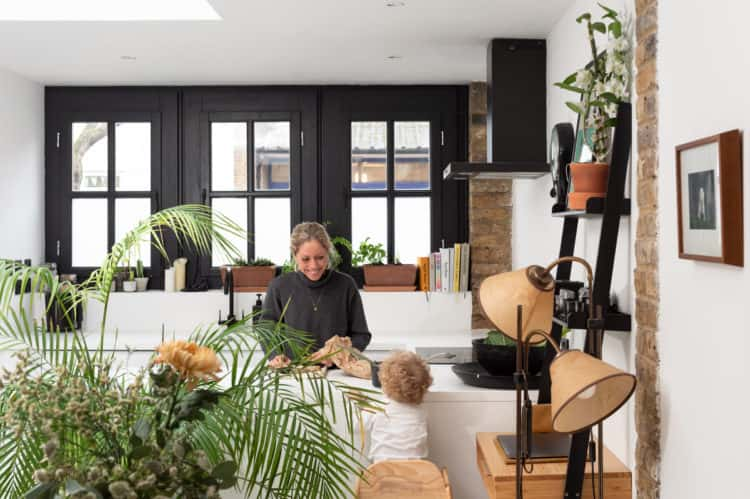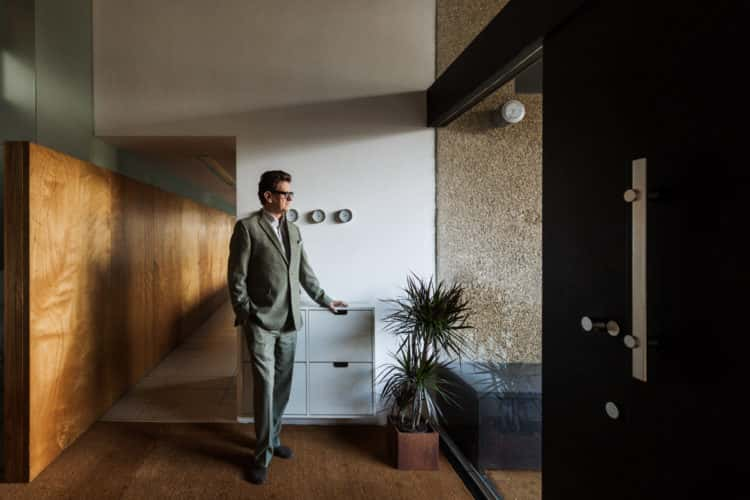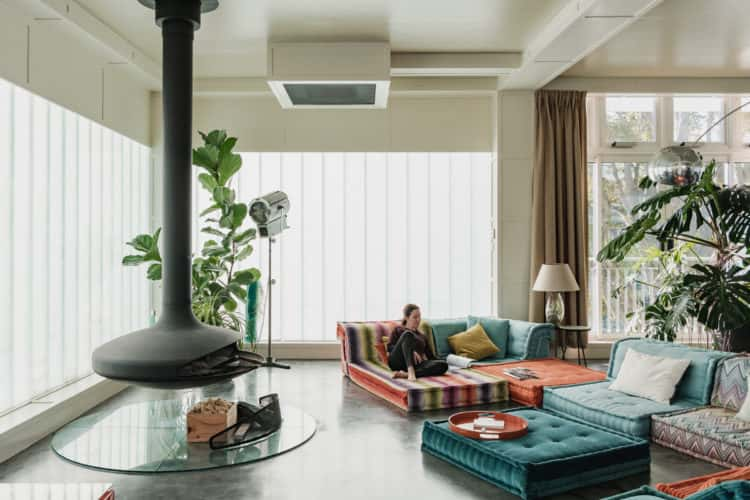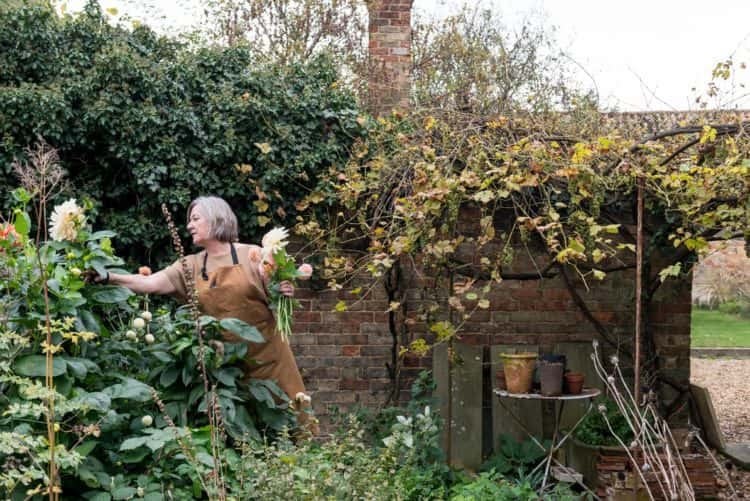Open House: Artist Naomi Garriock reflects on creating a home and creative hub in a disused office space the centre of Edinburgh
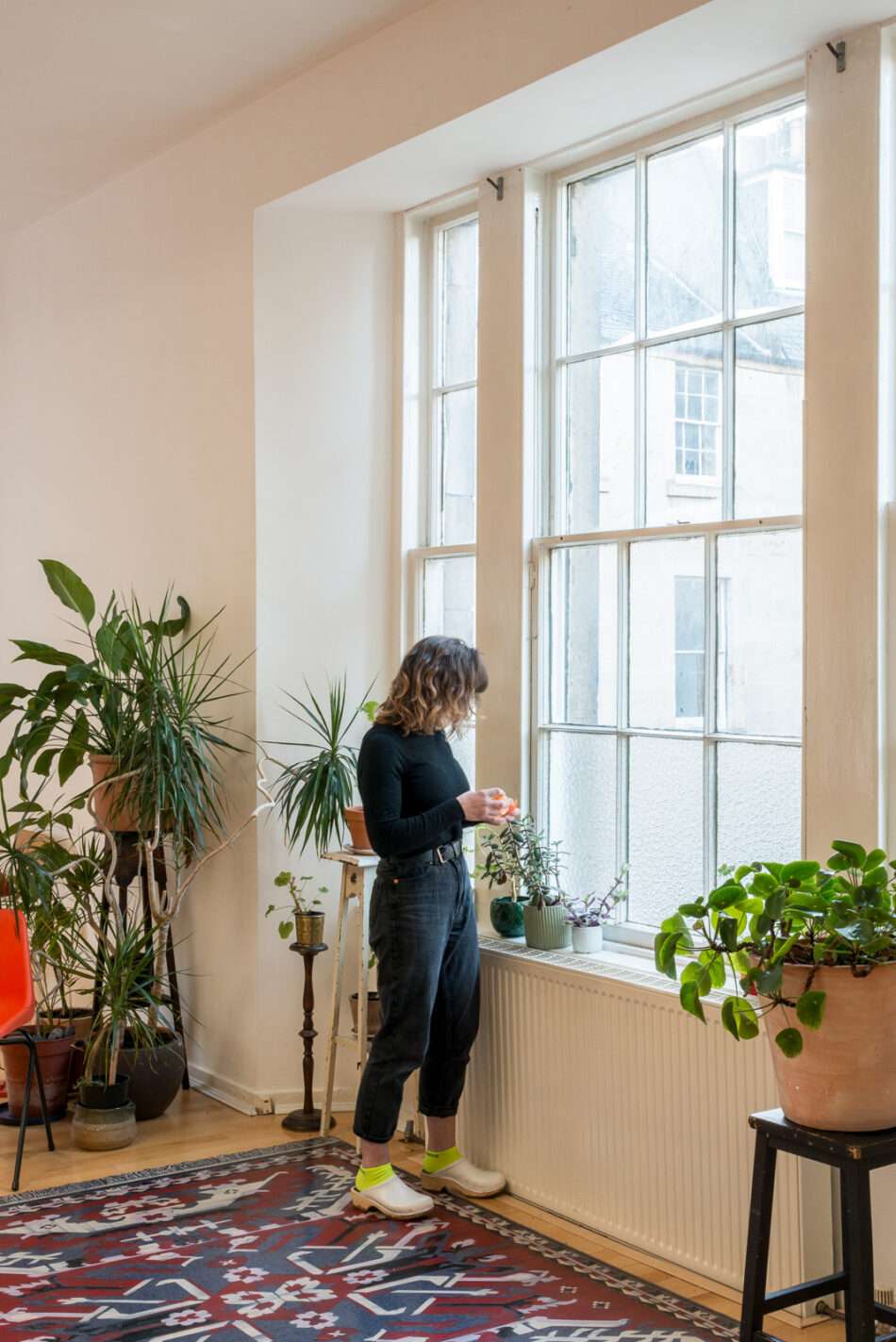
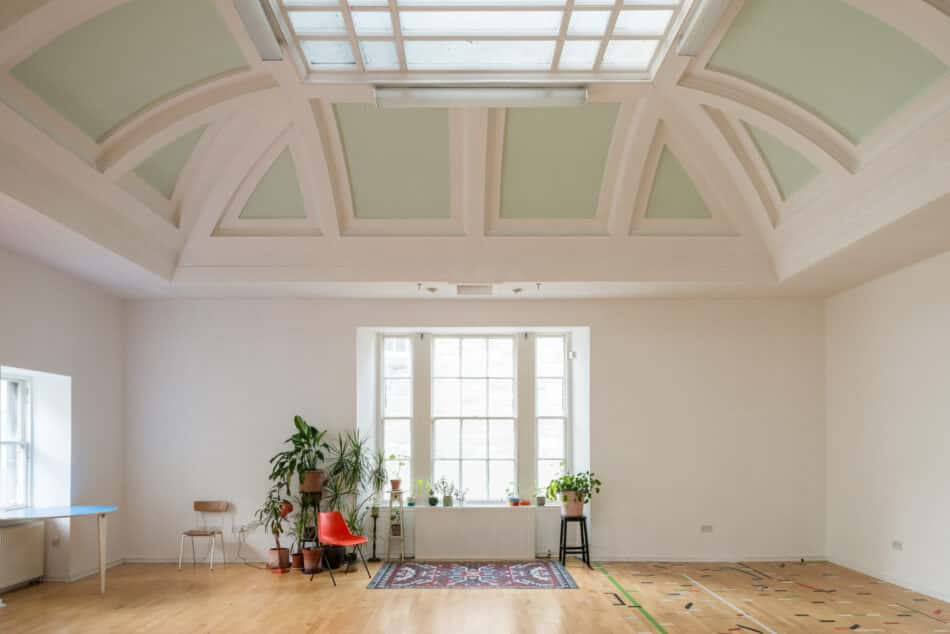
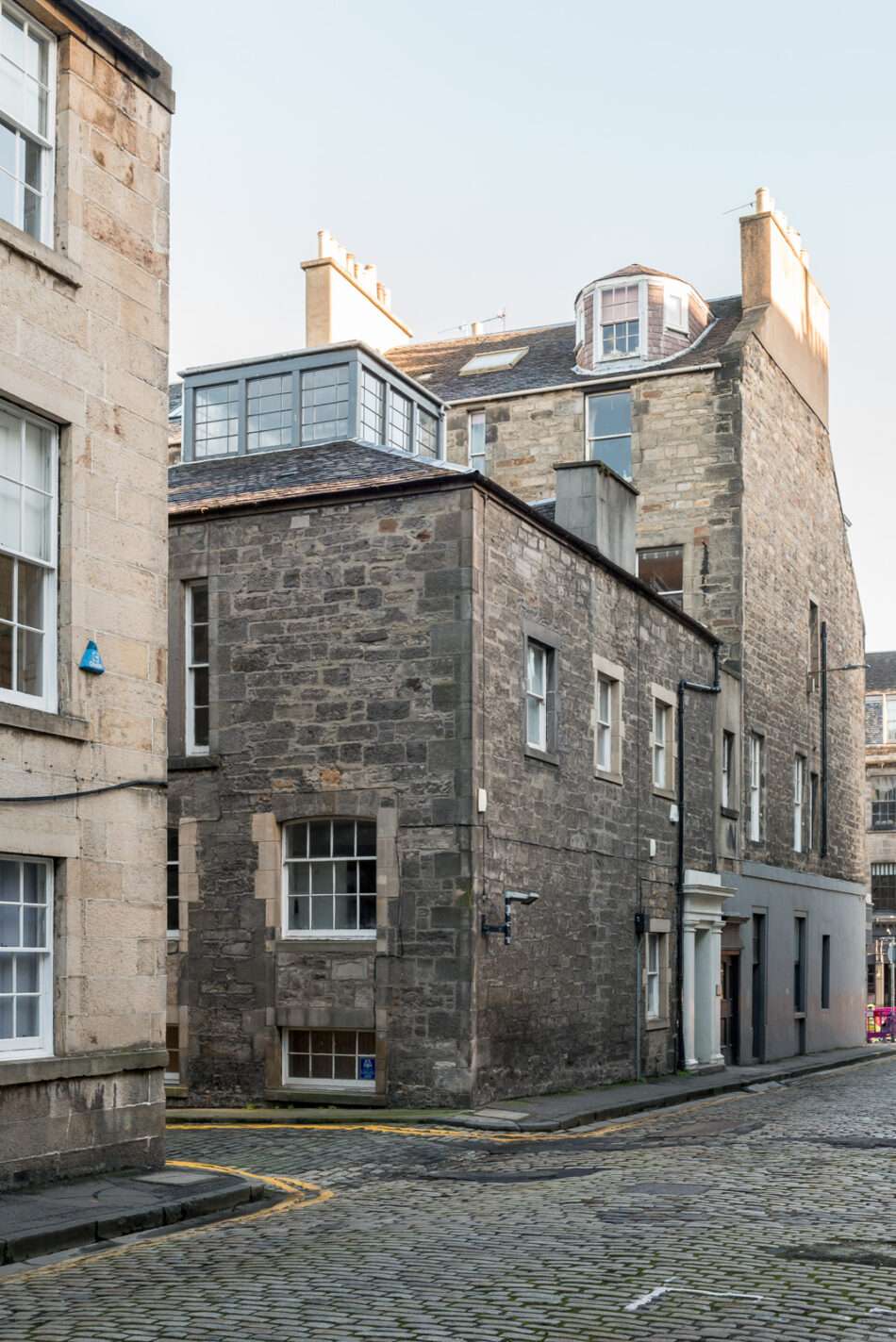
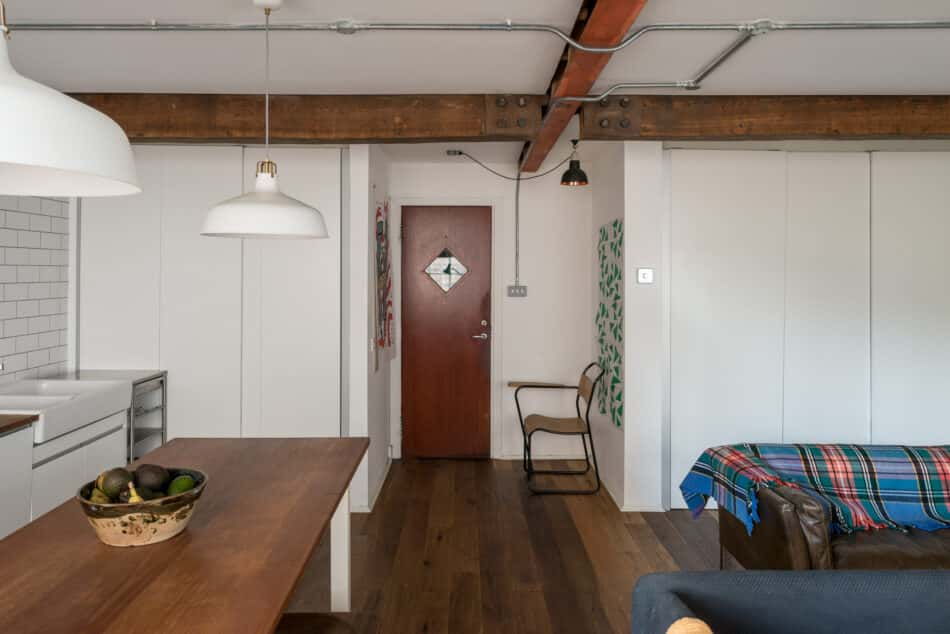
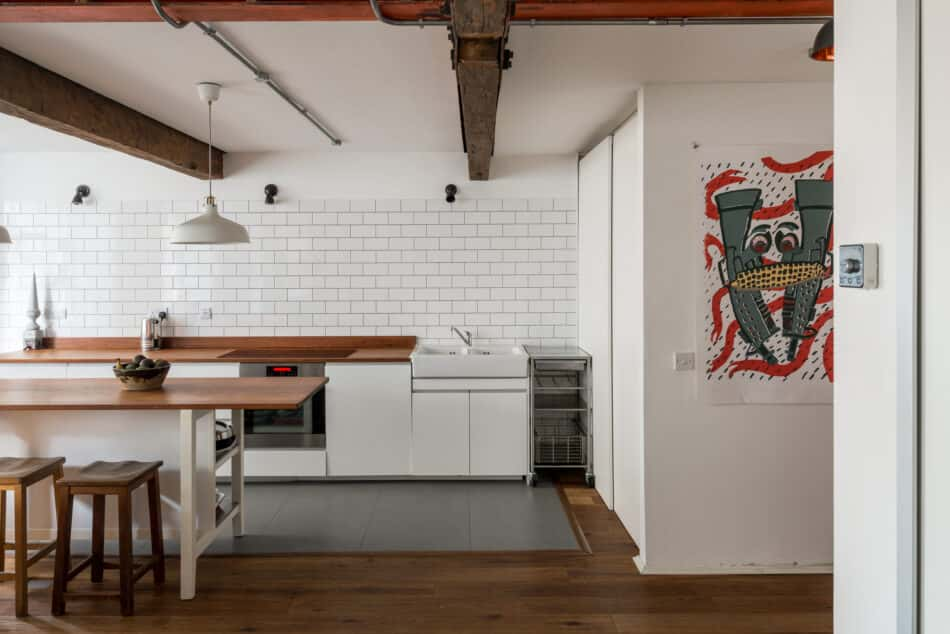
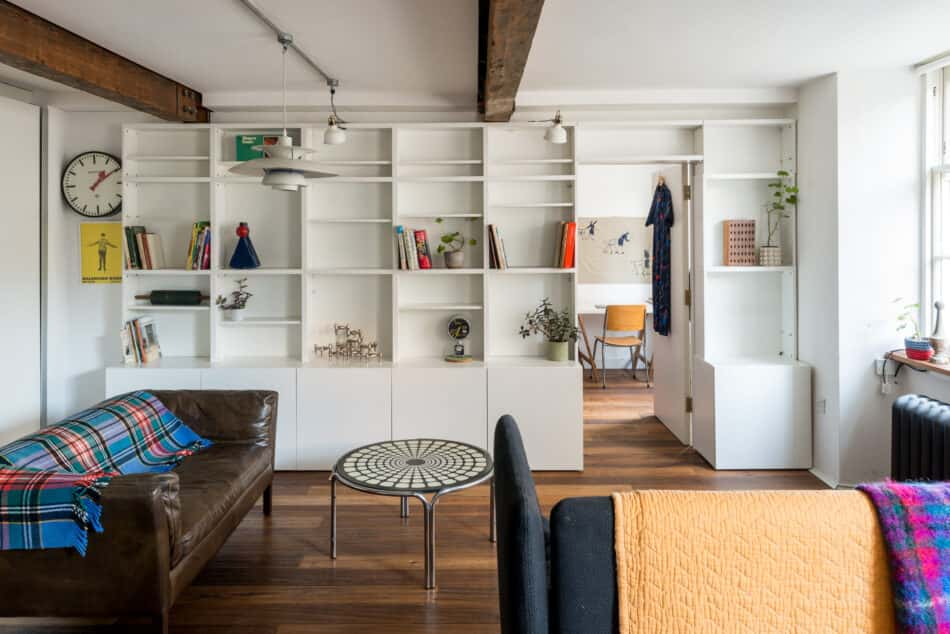
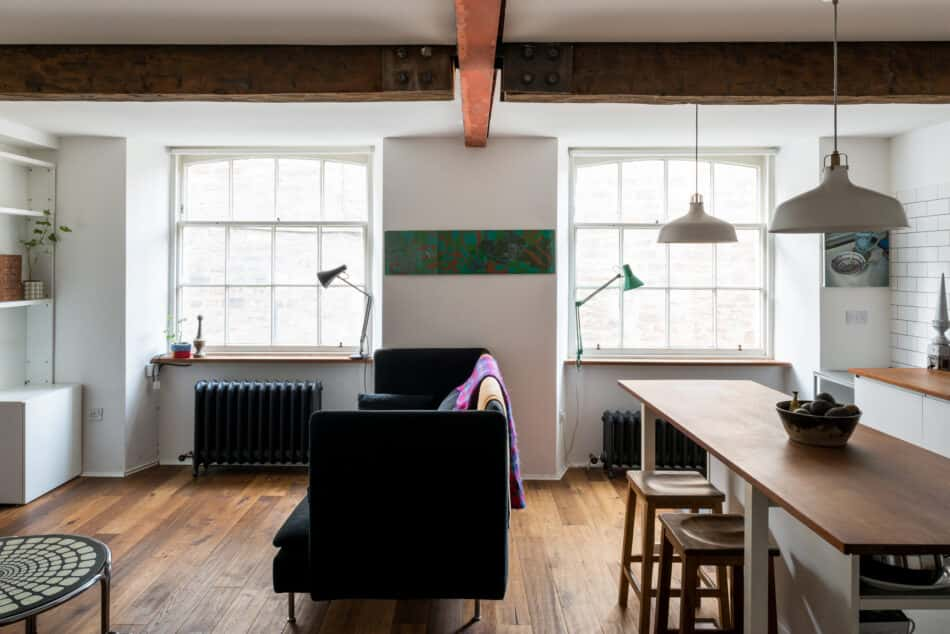
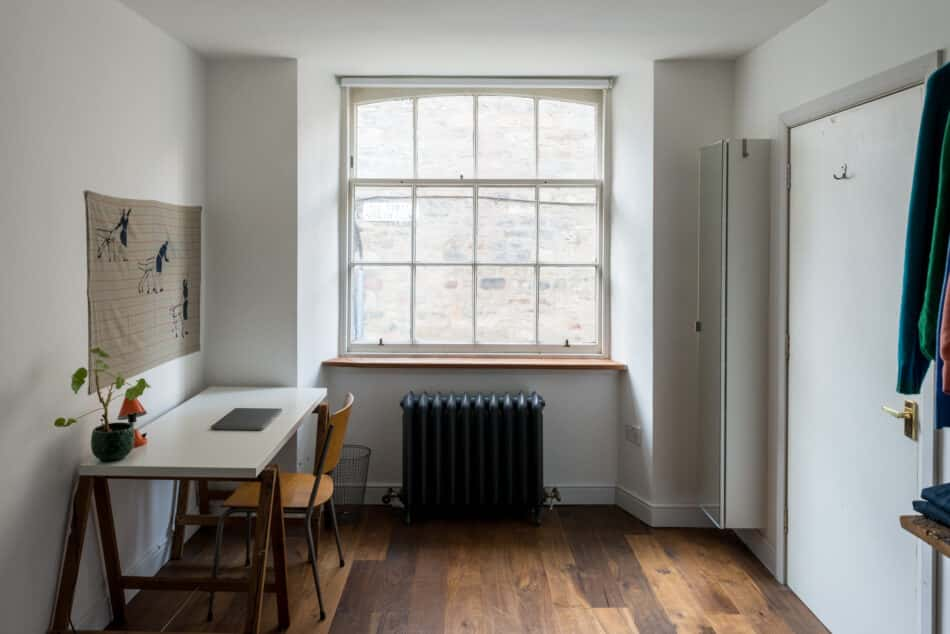
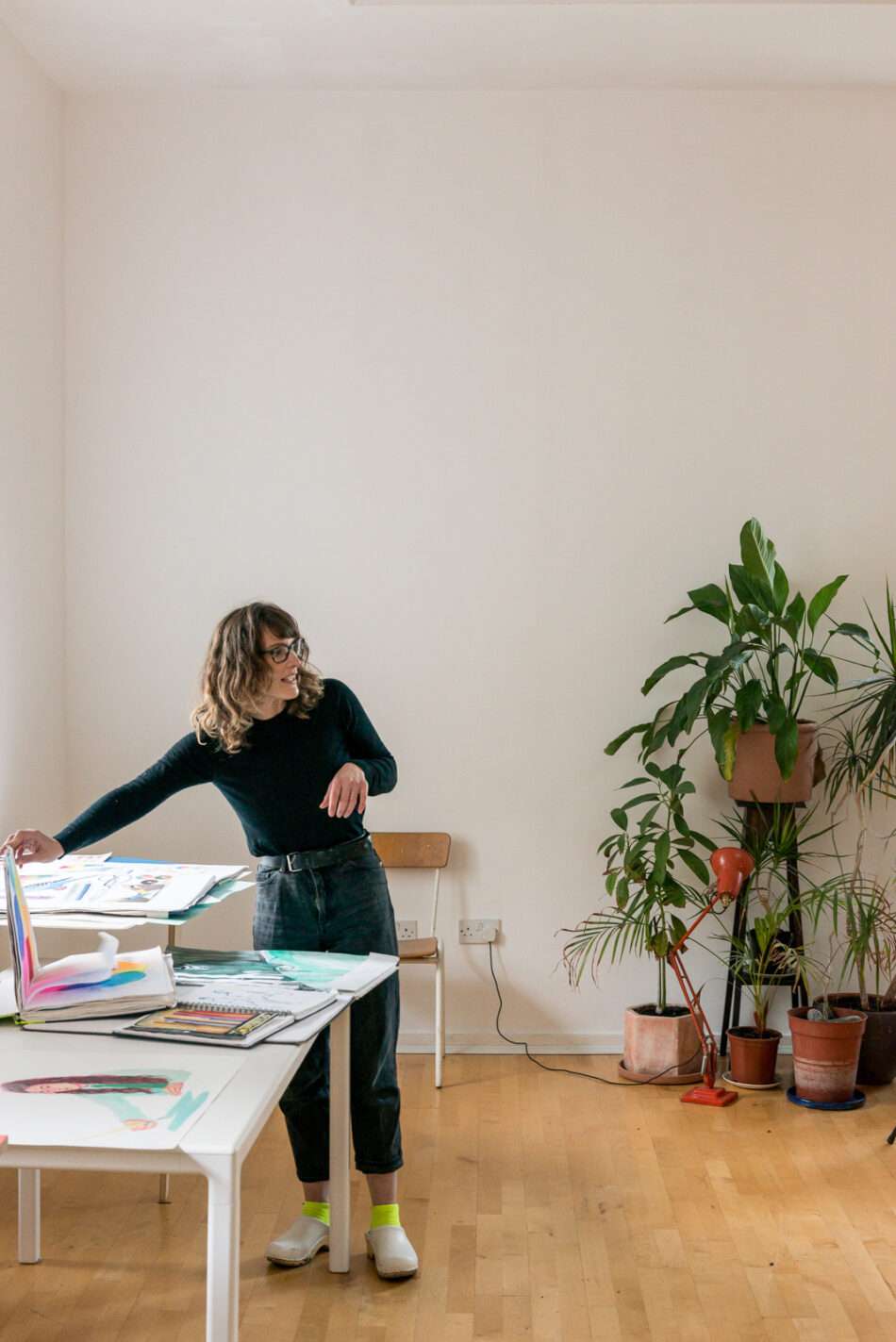
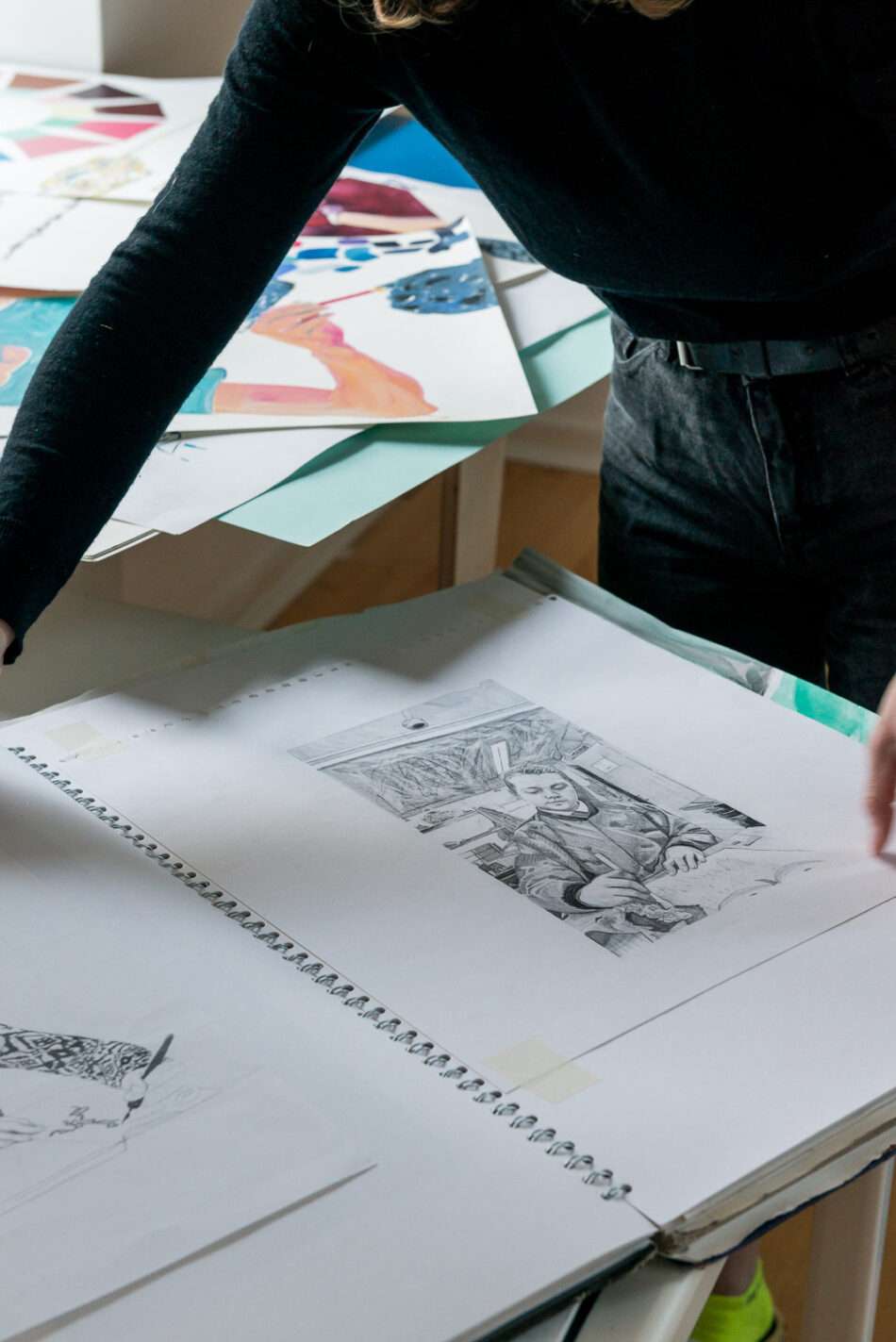
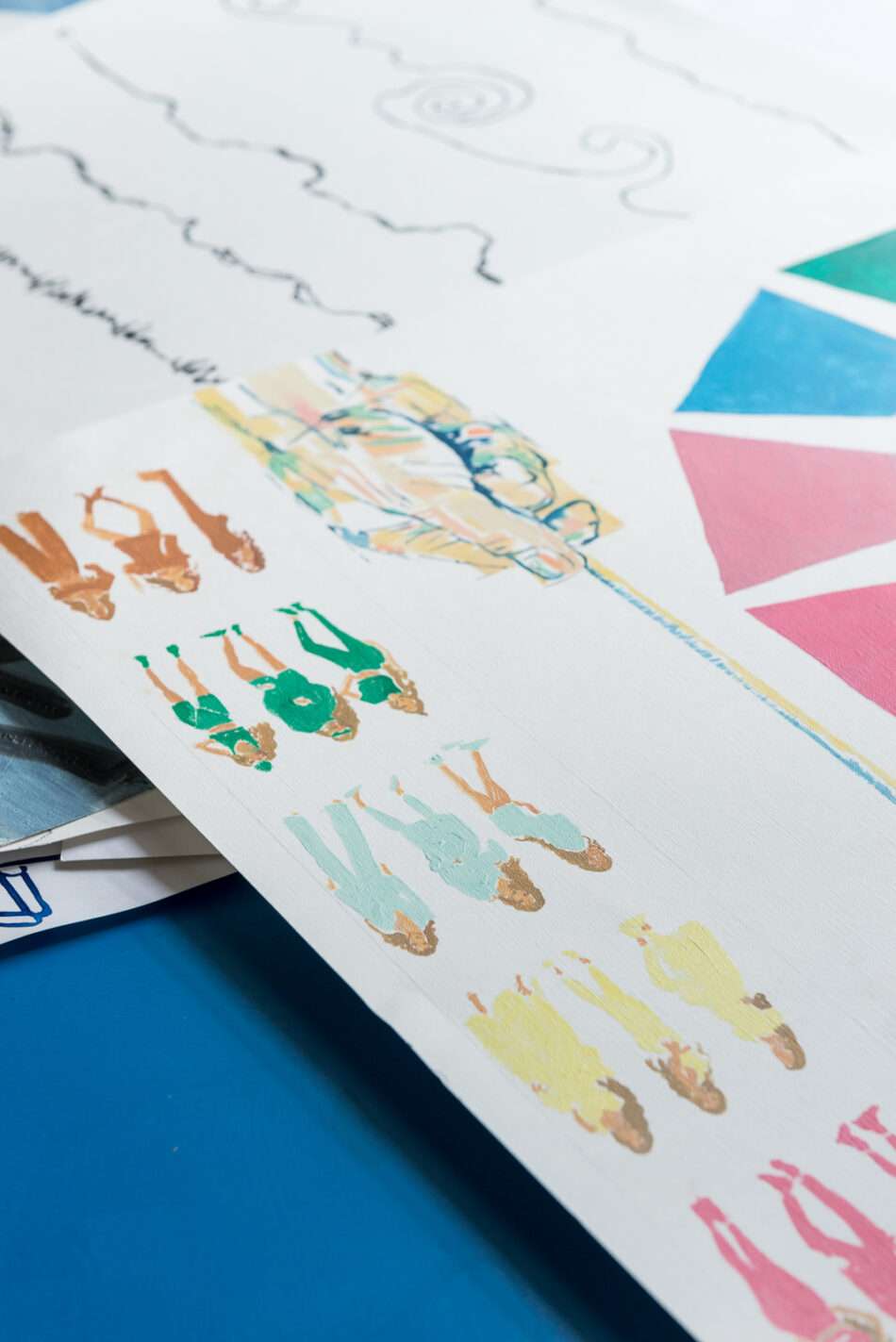
Tucked away from the bustle of Scotland’s capital on a quiet cobbled lane, Naomi Garriock’s Victorian home’s handsome sandstone exterior blends in seamlessly with its neighbours. From here there’s little hint of the building’s long, colourful history, or its vast room topped by a cupola, home to the unique independent arts space Naomi has run for the last eight years.
As the apartment and studio come on to the market, Naomi invites us inside to explore the building’s journey from a Victorian dance studio via a run-down office space, to the home and creative hub at the heart of Edinburgh’s thriving art scene.
Naomi: “A lot of my own art practice centers around finding and working with other artists. These self-organised projects – artist-run organisations and galleries – play a critical part in the cultural offerings of a city, and I wanted to think about how to incorporate that in my home, rather than it being separate.
“I had very specific criteria and looked for over a year. I wanted to be central and well connected, so I was looking within a mile radius of the city centre, and I needed somewhere that had a massive room, which really narrows down what you can find in Edinburgh.
“I was living in a traditional tenement flat in the city but found myself looking at commercial properties, places that had the potential to be converted into somewhere really nice to live but which also had these large rooms I could use for the project.
“Eventually I found this one. It was listed as an office and the building was quite down-at-heel, but when I came upstairs and walked into the ballroom with its high ceiling and the cupola I felt something so positive and exciting. You would never know it’s there from the street – it’s really secret, which I love.
“It was only after I bought the place that I discovered it had been built as a dance studio and a dwelling house in 1850. A father and daughter ran it by royal appointment, offering ‘dancing and calisthenic exercise for medical and hygienic purposes’, and later on it was taken on by the masons as the Masonic Lodge for Arts and Drama.
“The building had been used as an office for a long time before I bought it, but it had always been intended as a live/work space, and it was great to bring it back to what it was supposed to be.
“I didn’t have to do a huge amount of work. The whole building has changed quite dramatically over its history – the exterior is category B listed and I found some clues of how it had been used before, such as the places where cast-iron columns held up the ceiling, when the masons had used downstairs as a double-height workshop. But internally there weren’t many original features and I had the freedom to do what I wanted.
“I removed a small kitchen in the studio space and downstairs I just needed to take down the stud walls that divided up the room. Because it was a change of use it needed sound insulation, and I installed a new bathroom and boiler.
“I didn’t need to undertake any major work. It was more a case of refining the flow of the building, reconfiguring it so the studio and the flat can be one space or separate and accessed without going through the flat.
“Living here really did become an extension of my work as an artist. Someone described it as a gesamtkunstwerk, a total artwork. I’ve given my keys to many artists and ask them to consider the studio as if it was a room in my house. I’ve been able to share in other artists’ journeys and to offer something different and maybe more informal to normal residencies.
“The space has been used in many interesting ways. There were artists who shared the space on a regular basis, larger institutions, like galleries and universities, who have used the room for exhibitions and symposiums. It has been used for filming and screenings, developing and performing dance, for all sorts of music including an art rave.
“It’s been well loved and used by a lot of artists. It gave them time and space to make a change in their practice or take a big risk without the public accountability that comes with funding applications and Creative Scotland grants. There’s a freedom in an uninstituted space like this – I’ve never imposed a formal structure on it and it’s meant that it can be whatever it needs to be for each artist.
“You couldn’t really get any more city centre than you are here. It’s two roads back from Princes Street, the main road in Edinburgh, and yet it’s so quiet. Anything you want is on your doorstep – galleries, restaurants, and, when the festival is on, every kind of theatre.
“But Edinburgh is also so full of green spaces: there’s Arthur’s Seat, the giant extinct volcano, and with the building you get keys to the private gardens in Queen Street, though I prefer using Princes Street Gardens or the Botanics. At the weekends most people go up into the hills or out kayaking on the sea in Portobello.
“I’m moving to a new city while I do the Masters of Fine Art at the Glasgow School of Art – I’m continuing to make work with and about other artists – but it will be a huge wrench to leave the space.
“I feel a bit like a custodian to the building, living here has changed my life for the better. This place has had such an incredible history I would love for someone to continue to expand on its story as a live/work space, with art at its centre. Houses are more than just bricks, it’s what happens in them, and whatever you do in this place, it feels fun, it gives you creative energy.”
